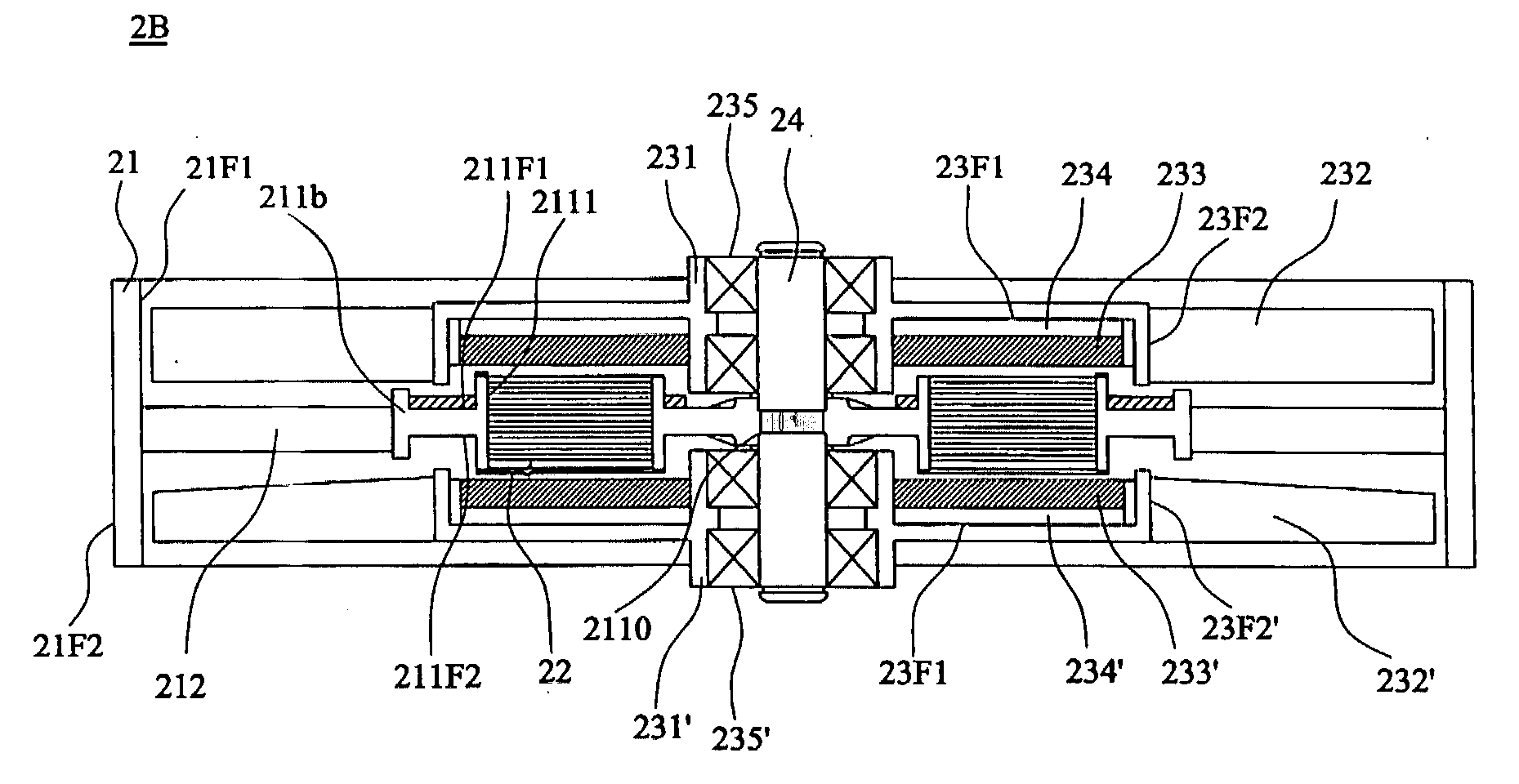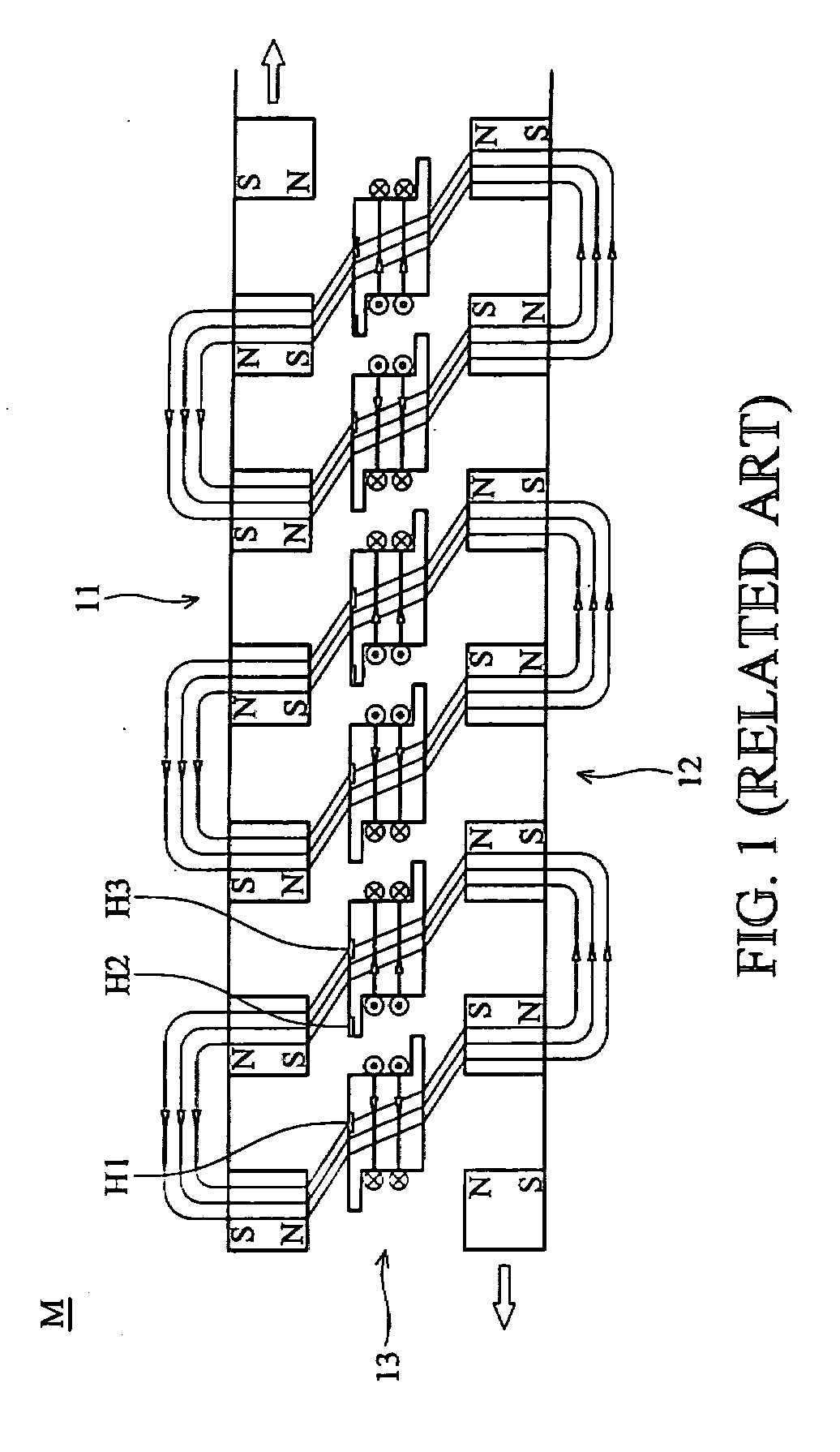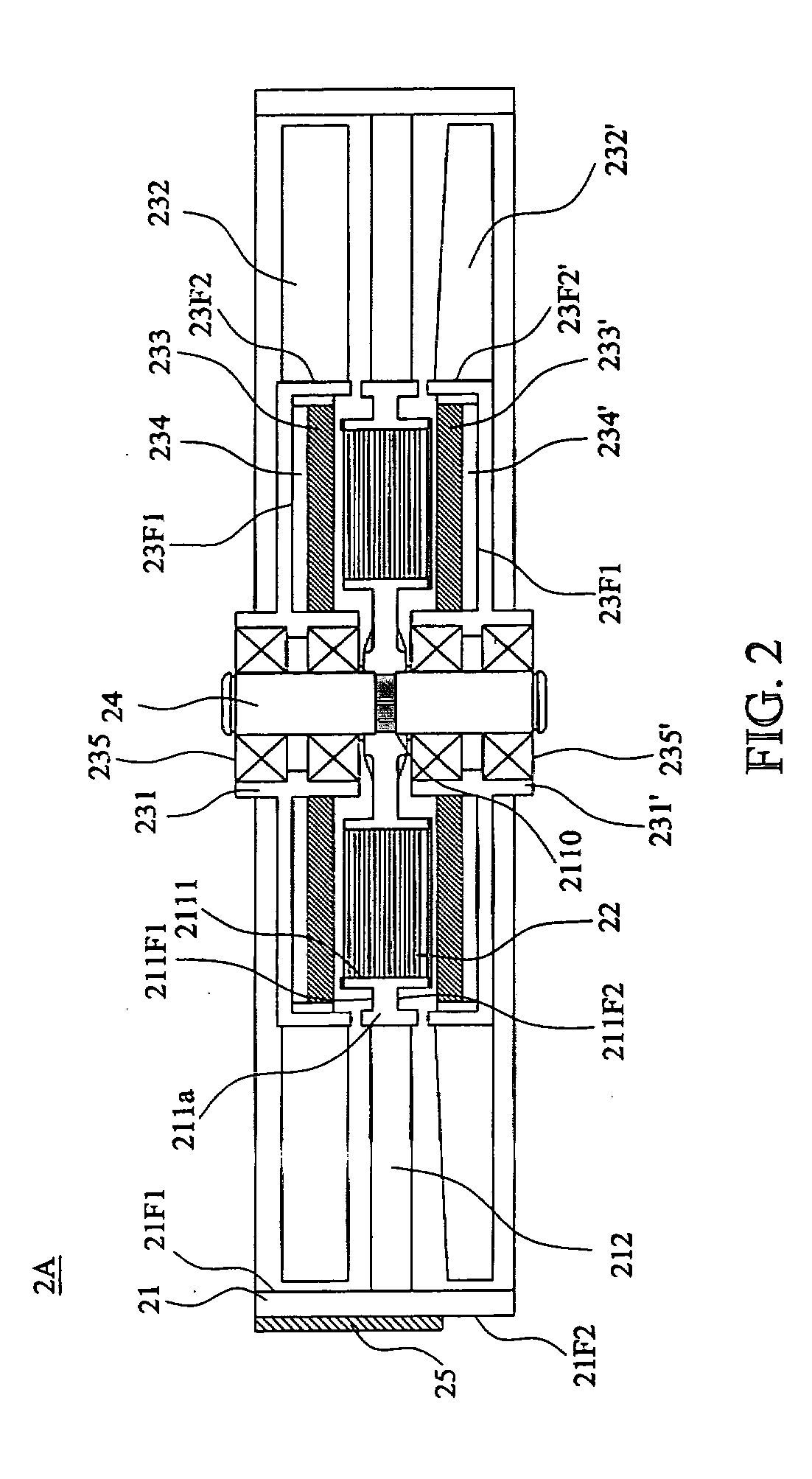Three-phase opposite rotating motor and fan
- Summary
- Abstract
- Description
- Claims
- Application Information
AI Technical Summary
Benefits of technology
Problems solved by technology
Method used
Image
Examples
Embodiment Construction
[0021] The following description is of the best-contemplated mode of carrying out the invention. This description is made for the purpose of illustrating the general principles of the invention and should not be taken in a limiting sense. The scope of the invention is best determined by reference to the appended claims.
[0022] In FIG. 2, a fan 2A of the first embodiment of the invention comprises a frame 21, a base 211a disposed in the outer frame 21, a plurality of connecting portions 212, a stator 22, a first rotor 31, a second rotor 31′, a plurality of bearings 235 and 235′, a shaft 24 and a controller 25. In this embodiment, the connecting portions 212, such as ribs or stationary blades, are securely disposed between the base 211a and the inner surface 21F1 of the frame 21. The base 211a comprises a first surface 211F1, a second surface 211F2, a centrally arranged through hole 2110 to telescope the shaft 24, and a plurality of hollow penetrating portions 2111 protruding from the...
PUM
 Login to View More
Login to View More Abstract
Description
Claims
Application Information
 Login to View More
Login to View More - R&D
- Intellectual Property
- Life Sciences
- Materials
- Tech Scout
- Unparalleled Data Quality
- Higher Quality Content
- 60% Fewer Hallucinations
Browse by: Latest US Patents, China's latest patents, Technical Efficacy Thesaurus, Application Domain, Technology Topic, Popular Technical Reports.
© 2025 PatSnap. All rights reserved.Legal|Privacy policy|Modern Slavery Act Transparency Statement|Sitemap|About US| Contact US: help@patsnap.com



